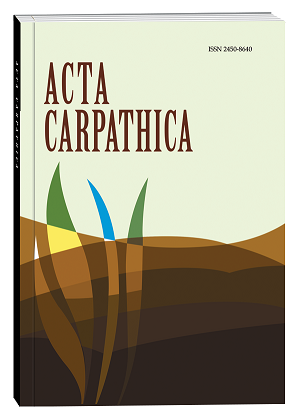CHANGES IN THE CHEMICAL COMPOSITION OF WATER IN DIFFERENT TYPES OF HYDROECOSYSTEMS
DOI:
https://doi.org/10.32782/2450-8640.2023.1.3Keywords:
eutrophication, triver, reservoir, quarry, lake, phosphates, sulfates, chloridesAbstract
The chemical composition of hydroecosystems is constantly changing as a result of external (anthropogenesis, climate changes, military operations) and internal (intra-water catchment processes) influences. The most common pollutants entering water bodies with surface runoff from built-up and industrial areas, with atmospheric precipitation, as a result of weathering, the use of fertilizers and synthetic detergents, and waste disposal, are sulfates, chlorides, and phosphates. The purpose of the study is to determine changes in the chemical composition of water in hydroecosystems of various types. The article examines seasonal changes in the content of sulfates, chlorides, and phosphates in hydroecosystems of various types and provides the main sources of their supply. The content of sulfates in the water of the Stubelka River (38.4–77.8 mg/dm3), Khrinnytsky Reservoir (40.3–71.1 mg/dm3), Lake Zasvitske 40.3–67.2 mg/dm3) and Morozivskyi quarry (50.0–69.2 mg/dm3). In addition to anthropogenic factors, sulfates enter reservoirs as a result of the death of biota and oxidation processes of substances of plant and animal origin. Changes in the concentration of chlorides in the water of the Stubelka River (14.9–28.4 mg/dm3), Khrinnytsky Reservoir (14.9–20.6 mg/dm3), Lake Zasvitske (3.54–21.1 mg/dm3), Morozivskyi quarry (7.09–39.0 mg/dm3) have been fixed. The highest concentrations of phosphates were found in the water of the Stubelka River (0.058–0.117 mgP/dm3) and the Khrinnytsky Reservoir (0.030–0.094 mgP/dm3), and the lowest – in the water of Lake Zasvitske (0.007–0.024 mgP/dm3) and the Morozivskyi Quarry (0.005–0.022 mgP/dm3). It was found that the content of sulfates, chlorides and phosphates in the water of all water bodies does not exceed the permissible values throughout the entire period of the study. It is shown that the content of the studied compounds in water bodies changes as follows: SO4 2¯ – quarry > lake > river > reservoir; Cl¯ – quarry > river > reservoir > lake; PO4 3¯ – river > reservoir > quarry > lake.
References
Клименко В.Г., Петрова Н.В. Оцінка якості води р. Харків. Харків : ХНУ імені В.Н. Каразіна, 2011. 58 с.
Набиванець Б.Й., Осадчий В.І., Осадча Н.М., Набиванець Ю.Б. Аналітична хімія поверхневих вод. Український науково-дослідний гідрометеорологічний інститут. Київ : Наукова думка, 2007. 456 с.
Mohan D., Sarswat A., Ok Y.S., Pittman Jr. C.U. Organic and inorganic contaminants removal from water with biochar, a renewable, low cost and sustainable adsorbent – a critical review. Bioresour. Technol. 2014. 160, P. 191–202. DOI: 10.1016/j.biortech.2014.01.120.
Owens P.N., Walling D.E. The phosphorus content of fluvial sediment in rural and industrialized river basins. Water research, 2002. 36(3), P. 685–701.
Yan Z., Wu L., Lv T., Tong C., Gao Z., Liu Y., ... & Yu D. Response of spatio-temporal changes in sediment phosphorus fractions to vegetation restoration in the degraded river-lake ecotone. Environmental Pollution, 2022. 308, 119650. DOI: 10.1016/j.envpol.2022.119650.








